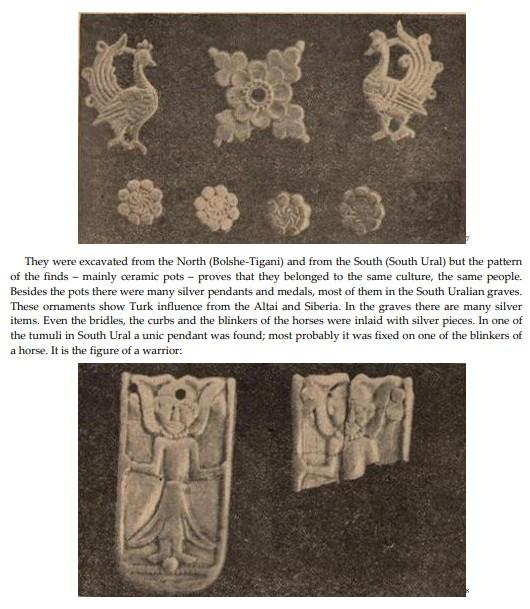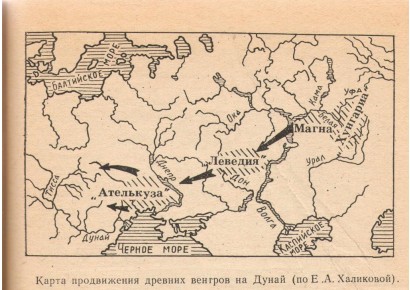az ural mindkét oldalán találtak magyar sírokat
Ivanov illustrated by a map the Hungarian graves and tumulus excavated by his team on both sides of the Ural.5 The graves were from the 8th century A.D.
The tumuli on the eastern side of the Ural are richer than those of the western side.
According to Ivanov the ancient country of the Hungarians: Magna Hungaria was not on the bank of the river Volga but further to the east

The figure wears exactly the same felt clothes and boots as the Kushan kings on their coins in ancient Bactria and India (they ruled these territories between the 1st - 4 th centuries A.D.) And the small figure has a necklace, too – most probably also made of silver – this was a royal sign of the Indoscythian kings and the Western Mahakshatrapas as it is represented on the statue of King Chastana in the Museum of Mathura, India. The only difference between the two representations is that the head of the Magyar figure is framed in a tulip flower. This was a typical Inner-Asian motive; the tulip was not known in India in ancient times.
http://epa.oszk.hu/01500/01521/00018/pdf/EPA01521_EurasianStudies_0213_009-043.pdf
és innen nincs messze a turgai kapu

lásd még
https://en.wikipedia.org/wiki/Magna_Hungaria